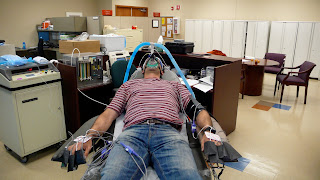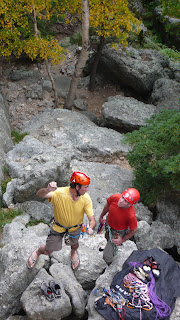
It is a huge honor to have 'Imperfect Apparition' - a route that Jack Tackle and I made the first ascent of in 2005, alpine style, on the SW Face of Mount Huntington, Alaska, recognized as one of the milestone climbs of the last 25 years. For more details on the route please see below.

http://www.alpinist.com/doc/ALP14/climbing-notes-tackle
Posted on Alpinist.com: December 1, 2005
MT. HUNTINGTON
By Jack Tackle
Perfect symmetry and complex faces always drew me to Mt. Huntington (3730m), but until May of this year I had never climbed it. On May 15, 2005, Fabrizio Zangrilli and I landed on the west fork of the Tokositna. Our intent was to climb a new route to the right of the Harvard Route on the Phantom Wall (west face) and left of the Smith/Teare Route on the far right side of the face.
After two days of recon—and the realization that W is clearly wrong about global warming—on May 19 we rappelled onto the face from the lowest point of the Stegosaurus. The terrain was moderate, and we simulclimbed all but one pitch up to the main rock headwall in the middle of the face. We struck out right onto beautiful brown granite—some of the best stone I have seen in the range—and quickly became absorbed in our objective. Fabrizio led two mixed pitches that followed a right-leaning traversing weakness. By the end of the second pitch, he found himself faced with an Alaska Range anomaly—a chimney system running with water at 4 p.m. at 10,200 feet. The thought of being soaked to the skin in this shower stall and enduring a bivy on unknown terrain was unappealing, so we left our two ropes fixed and rapped back to a snowfield where we chopped a bivy ledge and spent the evening waiting for the water to return to solid form.
At 4 a.m. the second day, we left the bivy gear and went light for the summit, intending to climb up and back in a single push. The former shower-stall chimney had seized up into a gorgeous section of mixed climbing that brought us in two pitches to a ramp system. Fabrizio took over, and we pitched out and then simulclimbed six pitches across the face into the center wall, which led us to the crux rockband. I searched for a weakness and found a flaring dihedral with a thin strip of ice in the back. Although it was only eighty feet long and led to easy ground above, it proved to be the most challenging part of the route. First Fabrizio, then I worked on this eighty-foot pitch. Finally, with some creative problem solving (tied-off Bugaboos for pro, a drytool traverse onto a rounded ledge, a manufactured number-three Camalot placement), I was able to break through our temporary barrier. It was now 6 p.m. We started simulclimbing again up the throat of the main upper face, heading for upper summit ridge of the Harvard and West Face Couloir routes.
advertisement
It was snowing and sloughing spindrift everywhere around us. We climbed until 11 p.m. and finally turned around when we could no longer see more than thirty feet in front of our faces. We had intersected the Harvard Route finish, maybe 500 feet below the summit. As we descended our route in darkness, the snow became more intense. We lost two hours dealing with a stuck rope on rappel in the coldest and darkest part of the night. In our attempts to pull the ropes, we also managed to strip forty feet from our second rope's sheath, reducing the length of our rappels, but increasing our resource of anchor material.
Twenty-seven hours after we left the bivy, we lay down and slept for five hours. I fell asleep while devouring my food and woke like a frozen Mastodon with unchewed jerky still in my mouth. We rapped off the lower Harvard rappels and a few hours later returned to a gracious reception from our base-camp comrades.
In keeping with proper alpine etiquette—tell the truth—and given our proximity to the Phantom Wall, and to the phantom summit, The Imperfect Apparition seems an appropriate name for our route (Alaska Grade 5+: M5 A3, 4,000').
Jack Tackle, Victor, Idaho



 http://www.alpinist.com/doc/ALP14/climbing-notes-tackle
http://www.alpinist.com/doc/ALP14/climbing-notes-tackle

 The world lost one of its great personalities this week.
The world lost one of its great personalities this week.






 This is the list of expeditions for 2009 & 2010. Please email fabrizio.zangrilli@gmail.com for pricing, individual trip descriptions, itineraries or to reserve your spot, as space is limited, on any of the listed expeditions; or to organize custom guiding and/or personalized rock, ice, alpine and expedition training.
This is the list of expeditions for 2009 & 2010. Please email fabrizio.zangrilli@gmail.com for pricing, individual trip descriptions, itineraries or to reserve your spot, as space is limited, on any of the listed expeditions; or to organize custom guiding and/or personalized rock, ice, alpine and expedition training.





























